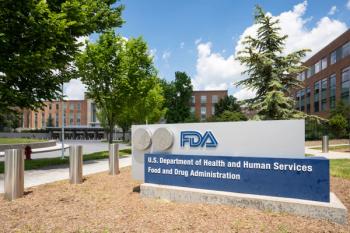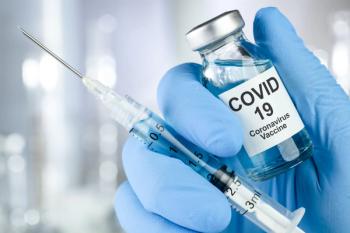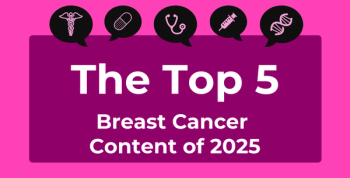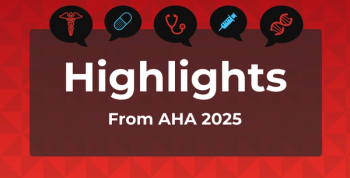
Auto-SCT Superior to Allo-SCT in Relapsed Myeloma After First-Line Auto-SCT
A meta-analysis suggests allogeneic stem cell transplantation (allo-SCT) should not be recommended following first-line autologous stem cell transplant (auto-SCT).
Patients with multiple myeloma who experience relapse following autologous stem cell transplantation (auto-SCT) have better survival outcomes if they undergo a second auto-SCT instead of an allogeneic transplant (allo-SCT), a new study has found. The findings,
Relapse after auto-SCT is common in patients with multiple myeloma, noted corresponding author Heinz Ludwig, MD, of Austria’s Wilhelminen Cancer Research Institute, and colleagues. When that happens, patients and physicians have a range of options, including promising new drugs and cellular therapies. However, Ludwig and colleagues said access to newer therapies is limited in many countries. Thus, many relapsed patients undergo either auto-SCT or allo-SCT.
Auto-SCT has been shown to be an effective therapy in many patients, particularly when there is a lengthy gap between the first and second procedures. A
However, Ludwig and colleagues noted that an influential group of American and European bone marrow transplantation experts
Ludwig and colleaguesnoted that a prospective study was recently launched in Germany that will compare outcomes between patients receiving allo-SCT to those receiving conventional therapy following relapse after auto-SCT.1 However, those results will not be available for several years. In the meantime, Ludwig and colleagues analyzed data from previously published studies to see if it could shed light on the relative efficacy of allo-SCT versus auto-SCT in patients experiencing relapse after first-line auto-SCT.
They found 5 studies that directly compared the 2 procedures, along with 2 additional studies that compared outcomes among patients with and without a suitable allo-SCT donor after relapse. The authors also identified data for 815 individual patients from 2 large databases and examined 5 smaller studies looking at stem-cell transplantation after relapse.
The studies directly comparing allo-SCT and auto-SCT consistently showed an OS benefit in patients who received autologous transplants.
“This is contrary to ‘popular thought’ that a more intensive intervention is inherently more effective than less aggressive strategies,” Ludwig and colleagues wrote.
Notably, in many of the studies, patients in the allo-SCT cohort were younger, which generally would be seen as conferring a survival advantage. Conversely, though, the time from first-line therapy to salvage therapy tended to be shorter in the allo-SCT group, which previous research suggests would be associated with worse outcomes.
In the 2 studies comparing patients with and without a suitable allo-SCT donor, the cohort of patients who underwent allo-SCT had superior survival outcomes. However, the authors explained that was to be expected, particularly because many patients without a donor received treatment with conventional drugs available at the time of the study or received no treatment at all.
The investigators said real-world use of allo-SCT appeared to be receding as a preferred option after relapse, even before these new data.
“There is no longer mention of allo-SCT as a valuable treatment option, neither in newly diagnosed nor in relapsed/refractory patients in recent European Myeloma Network/European Hematology Association guidelines on the management of patients with multiple myeloma,” they explained.
The investigators said auto-SCT itself is likely to become less common as more patients gain access to therapies like antibody-drug conjugates, bispecific antibodies, and chimeric antigen receptor T-cell therapy. However, they said in settings where such options are not available, auto-SCT should be seen as a valid option, while allo-SCT “can no longer be recommended.”
References
1. Ludwig H, Bernhard S, Ikeda T, et al. Allogeneic versus autologous stem cell transplantation after relapsing following first-line autologous transplantation for multiple myeloma: A systematic review. Cancer. 2025;131(10):e35896. doi:10.1002/cncr.35896
2. Jimenez-Zepeda VH, Mikhael J, Winter A, et al. Second autologous stem cell transplantation as salvage therapy for multiple myeloma: impact on progression-free and overall survival. Biol Blood Marrow Transplant. 2012;18(5):773-779. doi:10.1016/j.bbmt.2011.10.044
3. Giralt S, Garderet L, Durie B, et al. American Society of Blood and Marrow Transplantation, European Society of Blood and Marrow Transplantation, Blood and Marrow Transplant Clinical Trials Network, and International Myeloma Working Group consensus conference on salvage hematopoietic cell transplantation in patients with relapsed multiple myeloma. Biol Blood Marrow Transplant. 2015;21(12):2039-2051. doi:10.1016/j.bbmt.2015.09.016
Newsletter
Stay ahead of policy, cost, and value—subscribe to AJMC for expert insights at the intersection of clinical care and health economics.









































